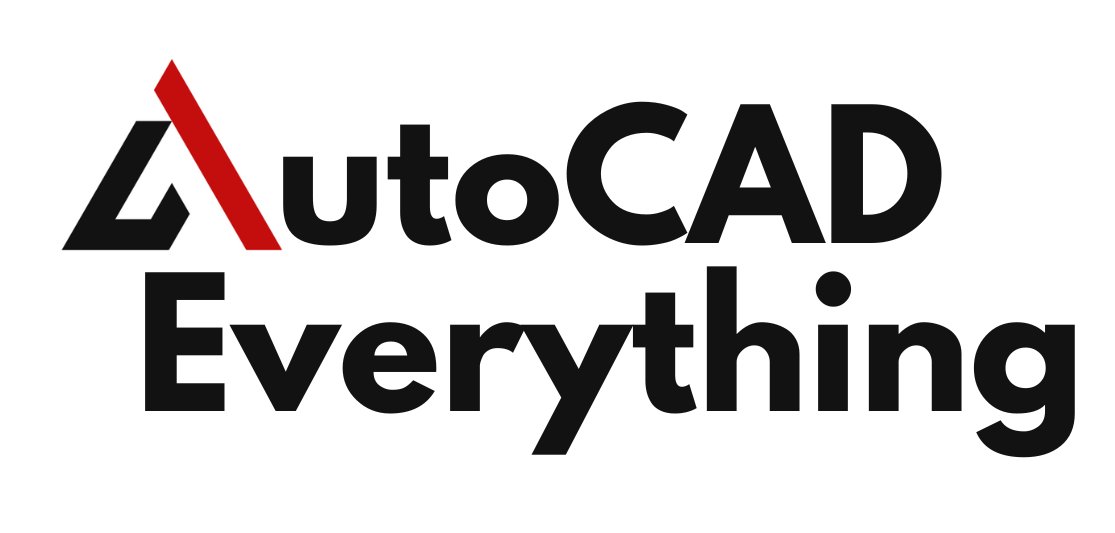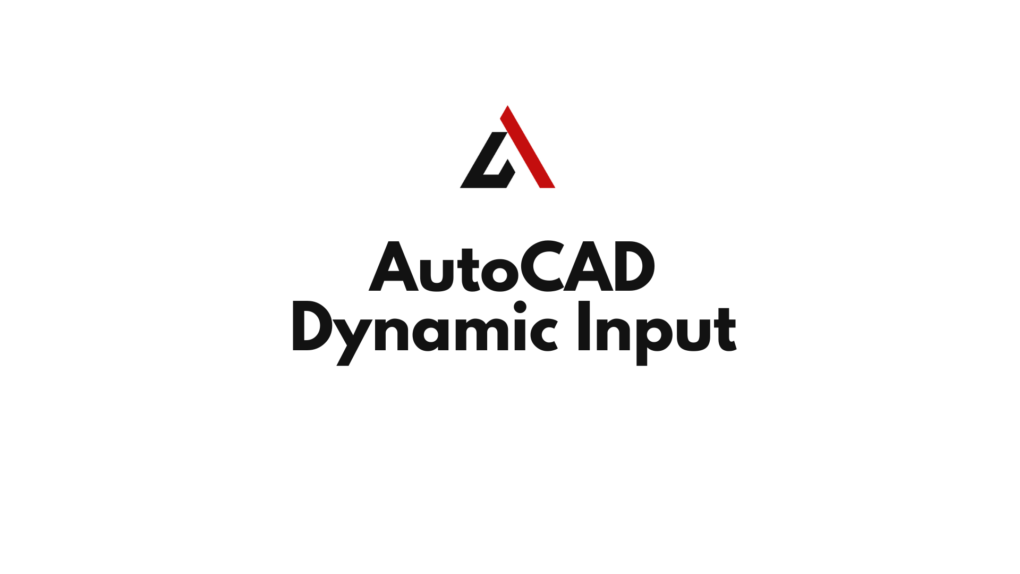Introduction
AutoCAD is a powerful tool for drafting and design, offering numerous features that enhance the user experience. One such feature is Dynamic Input, a tool designed to provide a more interactive and streamlined command experience. By displaying command prompts and inputs near the cursor, Dynamic Input reduces the need to constantly reference the Command Line, allowing you to focus more on your design work. This article provides a comprehensive guide on how to use the AutoCAD Dynamic Input feature to improve your efficiency and precision in drafting.
Table of Contents
What is Dynamic Input in AutoCAD?
Dynamic Input in AutoCAD is a feature that provides a contextual interface near the cursor, displaying command prompts, options, and input fields directly within the drawing area. This feature allows users to enter commands, specify dimensions, and make adjustments without having to rely solely on the Command Line. It is particularly useful for keeping your focus on the drawing space, making the design process faster and more intuitive.
Dynamic Input includes three main components:
- Pointer Input: Displays the coordinates of the cursor and allows you to enter numerical values directly at the cursor’s location.
- Dimension Input: Prompts you to enter dimensions for drawing objects such as lines, circles, and rectangles.
- Dynamic Prompts: Shows command prompts and options near the cursor, offering a more direct way to interact with AutoCAD commands.
Enabling and Configuring AutoCAD Dynamic Input
How to Enable Dynamic Input
Enabling Dynamic Input in AutoCAD is simple:
- Using the Status Bar: Click on the Dynamic Input icon (a small square with a cross inside) located in the status bar at the bottom of the AutoCAD window. If the icon is highlighted, Dynamic Input is enabled; if not, click it to turn it on.
- Using the Command Line: Type
DYNMODEinto the Command Line and press Enter. Then, enter1to enable Dynamic Input. To disable it, enter0. - Keyboard Shortcut: Press
F12on your keyboard to toggle Dynamic Input on or off.

Configuring Dynamic Input Settings
To customize Dynamic Input to fit your needs:
- Accessing Dynamic Input Settings: Right-click the Dynamic Input icon in the status bar and select “Dynamic Input Settings.” This opens the Drafting Settings dialog box, where you can adjust various options related to Dynamic Input.
- Pointer Input: Enable or disable pointer input, which controls whether the cursor’s coordinates are displayed and if numerical input is allowed directly at the cursor.
- Dimension Input: Choose whether to display dimension input for length and angle when drawing or editing objects. This option can also be set to allow you to toggle between distance and angle input fields.
- Dynamic Prompts: Configure the appearance and behavior of dynamic prompts, including whether they are shown at all and how they interact with command entry.
- Input Settings: You can customize the behavior of the Dynamic Input interface, such as setting it to automatically accept input after a specified time or enabling Tab cycling between input fields.
Using Dynamic Input for Common Commands
Drawing Lines with Dynamic Input
When drawing lines, Dynamic Input simplifies the process by displaying real-time distance and angle information near the cursor:
- Activate the Line Command: Type
LINEinto the Command Line or select it from the Ribbon. - Specify the First Point: Click to set the starting point of the line. The Dynamic Input display will immediately show the coordinates of this point.
- Enter Length and Angle: As you move the cursor, Dynamic Input will display fields for entering the line’s length and angle. You can type the exact values directly at the cursor, press Enter, and the line will be drawn according to these specifications.
Creating Circles with Dynamic Input
Dynamic Input enhances precision when creating circles by allowing you to enter the radius or diameter directly:
- Activate the Circle Command: Type
CIRCLEor select it from the Ribbon. - Specify the Center Point: Click to set the center of the circle.
- Enter Radius or Diameter: As you move the cursor, the radius value is displayed near the cursor. Type the desired radius or switch to diameter input by pressing
D, then enter the value. The circle is drawn accordingly.
Modifying Objects with Dynamic Input
Dynamic Input is also effective when modifying existing objects, such as moving or rotating:
- Using the Move Command: Select the object and activate the
MOVEcommand. Dynamic Input will display the distance moved as you drag the object. Enter the exact distance at the cursor for precise placement. - Using the Rotate Command: Select the object and activate the
ROTATEcommand. Dynamic Input will show the angle of rotation as you move the cursor. Enter the desired rotation angle directly, ensuring accurate alignment.
Advanced Uses of Dynamic Input
Tab Cycling Between Input Fields
Dynamic Input allows you to cycle between different input fields using the Tab key. For example, when drawing a line, you can switch between entering the length and angle by pressing Tab, allowing for more flexible and precise input:
- Start a Command: For instance, activate the Line command and specify the first point.
- Enter Values: As Dynamic Input shows both length and angle fields, use the Tab key to switch between them. Enter the length first, then Tab to the angle field, or vice versa, depending on your needs.
Using Dynamic Input with Custom Commands
Dynamic Input can be customized to work with custom commands or scripts that you have created:
- Integrating with Scripts: When creating custom commands or AutoLISP routines, you can configure them to utilize Dynamic Input for a more interactive user experience.
- Customizing Prompts: Within your scripts, you can define custom prompts that take advantage of Dynamic Input, ensuring that users receive real-time feedback and guidance while executing the command.
Tips for Effective Use of Dynamic Input
- Practice and Familiarity: Spend time practicing with Dynamic Input to get comfortable with its features. The more familiar you are with how it works, the more efficiently you can use it in your workflows.
- Balancing with Command Line: While Dynamic Input is powerful, there are times when the Command Line may be more suitable, particularly for complex commands or when using command history. Learn to balance the use of both to optimize your efficiency.
- Adjusting Input Settings: Fine-tune Dynamic Input settings based on your specific needs. For instance, if you frequently switch between drawing lengths and angles, adjust the Tab cycling speed or set up custom input fields to match your workflow.
Sugested Read- AutoCAD Palettes
Conclusion
AutoCAD’s Dynamic Input feature is a powerful tool that enhances the user experience by providing an interactive and intuitive interface for command entry. By displaying prompts, dimensions, and options near the cursor, Dynamic Input allows you to work more efficiently, reducing the need to shift focus away from the drawing area. Whether you are a beginner or an experienced user, mastering Dynamic Input can significantly improve your precision and speed in AutoCAD. With proper configuration and regular use, this feature can become an indispensable part of your drafting toolkit.
FAQs
- How do I enable Dynamic Input in AutoCAD?
You can enable Dynamic Input by clicking the Dynamic Input icon in the status bar, pressingF12, or typingDYNMODEand entering1in the Command Line. - Can I customize what is displayed in Dynamic Input?
Yes, you can customize Dynamic Input settings by right-clicking the Dynamic Input icon and selecting “Dynamic Input Settings.” Here, you can adjust what information is displayed and how it behaves. - What are the benefits of using Dynamic Input?
Dynamic Input allows for real-time command entry and feedback near the cursor, improving focus, precision, and speed by reducing reliance on the Command Line. - Can Dynamic Input be used with all AutoCAD commands?
While most common commands in AutoCAD support Dynamic Input, some complex or specialized commands may still require traditional Command Line input. - How do I switch between input fields in Dynamic Input?
You can switch between input fields in Dynamic Input by pressing the Tab key. This allows you to toggle between different parameters, such as length and angle when drawing a line.

